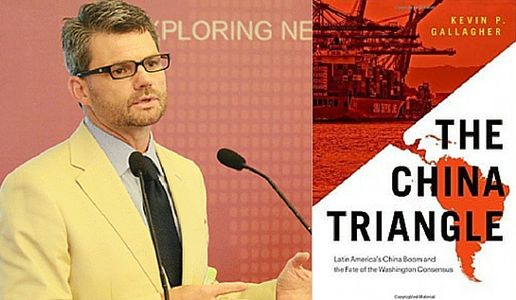The China Triangle Reviewed in The Daily Times
The China Triangle, the latest book by Kevin Gallagher, Professor of Global Development Policy at the Frederick S. Pardee School of Global Studies at Boston University, was analyzed in The Daily Times, an English-language Pakistani newspaper, on February 8, 2017.
In The China Triangle, Gallagher examines the parallel between the boom of Latin American economies from 2003 to 2013 and the transformation of China from a poverty-stricken nation to the largest economy in the world.
Gallagher also examines how the Latin American boom began to fade in 2014, while China’s economy slowed and shifted toward a consumer-based economy less dependent on imported natural resources.
Looking to the future, Gallagher discusses how Latin America now faces slow growth along with increasing social and environmental conflict as a result of being caught over-exposed to China, and saving very little of its China windfall for the future.
From the text of the article:
China has not only outdone Latin America in exporting commodities, but it has also become the main importer of Latin America’s natural resources: China has reduced Latin America from exporting commodities to the world to exporting natural resources to China. This is the central idea of Kevin P. Gallagher’s book, The China Triangle: Latin America’s China boom and the fate of the Washington Consensus, published by Oxford University Press in 2016. Gallagher is Professor of Global Development at Boston University. This opinion piece intends to discuss Gallagher’s certain ideas expressed in the book.
Three points are written large upon the book. Firstly, it mostly focuses on China-Latin America economic relationship. Secondly, many ideas are repeated to banality. Thirdly, its presentation needs rearrangement. Regarding the last, five phases can be used to present the book in a better way. The first phase spanned from the nineteenth century (1870) to the Great Depression (1929). During this phase, Latin America was a winner of ‘commodity lottery’,as Western Europe needed Latin America’s vital natural resourcessuch as copper, gold, silver and iron ore and commoditiessuch as coffee, cocoa, tobacco, sugar, beef, hides, wool, and bananasto support its industrial revolution. These commodities not only substituted European agriculture produce to spare peasantry to be utilised as industrial workforce, but these commodities also prompted European and the US companies to invest heavily in Latin America’s infrastructure to hasten the provision of commodities. During this phase, Latin America’s economies grew by 3.4 percent per year (i.e. GDP growth).
You can read the entire analysis here.
Kevin Gallagher is the co-chair of the Task Force on Regulating Capital Flows and has served as an advisor to the Department of State and the Environmental Protection Agency in the United States, as well as to the United Nations Conference on Trade and Development. Gallagher has been a visiting or adjunct professor at the School for Advanced International Studies at Johns Hopkins University, the Fletcher School of Law and Diplomacy; El Colegio de Mexico in Mexico; Tsinghua University in China, and the Center for State and Society in Argentina.
